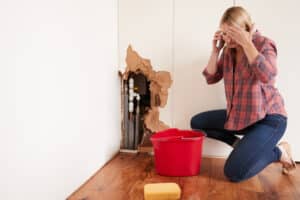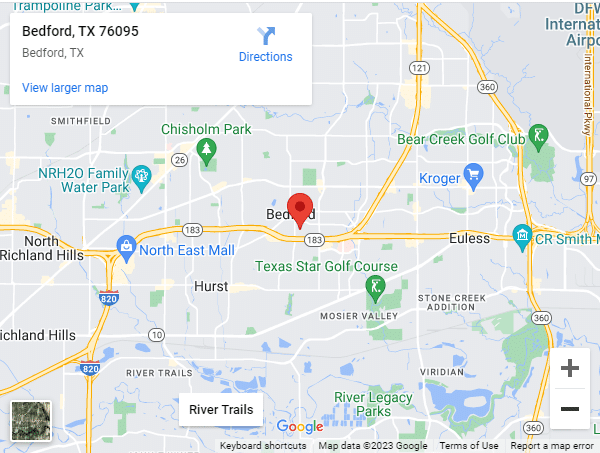Frozen pipes are a common yet potentially disastrous problem for homeowners during the colder months. When the temperature drops, water inside pipes can freeze and expand, leading to burst pipes and subsequent water damage – a costly and unwanted scenario for any homeowner. Understanding how to prevent and fix frozen pipes is essential to maintaining the integrity and safety of your home’s plumbing system throughout the winter. This comprehensive guide will provide you with valuable tips and insights on prevention and repair, helping you avoid the stress, inconvenience, and expense of a frozen pipe disaster.
Remember that prevention is always better than cure, especially when it comes to your home’s plumbing system. Trust the skilled technicians at Professor Pipes Plumbing & Backflow to provide top-rated plumbing services in Bedford, TX, and the surrounding areas. Schedule your winter plumbing maintenance appointment or request assistance in case of a frozen pipe emergency by clicking the link below, and experience our commitment to delivering the best plumbing solutions for your home.
Warning Signs and Risks of Frozen Pipes
Before learning how to prevent and fix frozen pipes, it’s essential to recognize the warning signs and understand the associated risks:
1. Temperature Drop
Frozen pipes are most likely to occur when temperatures drop below freezing, typically around 32 degrees Fahrenheit. Be aware of the weather forecast and take necessary precautions when a cold spell is imminent.
2. Frost on Pipes
An early warning sign of frozen pipes is frost accumulation on the exterior of exposed pipes, such as those located in basements, crawl spaces, and garages. If you notice frost building upon a pipe, take action immediately to prevent it from freezing and potentially bursting.
3. Reduced Water Flow
An unusually weak or inconsistent water flow from faucets may indicate that a pipe is partially frozen, obstructing the flow of water.
4. Strange Noises
Unusual noises, such as whistling or clanking, emanating from your plumbing system can be a sign of frozen pipes. Pay attention to any unexpected sounds and act quickly if you suspect a freeze.
Preventing Frozen Pipes
Taking proactive measures to prevent pipe freezing is critical in avoiding water damage and costly repairs. Consider the following preventative measures:
1. Insulate Pipes
Ensure that pipes in vulnerable areas, such as crawl spaces, attics, basements, and unheated rooms, are insulated with pipe sleeves, heat tape, or heat cables to protect them from freezing temperatures.
2. Seal Air Leaks
Air leaks in your home’s walls, ceilings, and floors can allow cold air to infiltrate, causing pipes to freeze. Caulk and seal any gaps, cracks, or openings near plumbing fixtures to reduce the risk of frozen pipes.
3. Maintain a Consistent Temperature
Keeping your home’s temperature consistently above 55 degrees Fahrenheit, even if you’re away, helps prevent the water inside pipes from freezing. Additionally, open cabinet doors under sinks and in bathrooms to ensure warm air circulates around the pipes.
4. Let Faucets Drip
Allowing faucets to drip slightly during periods of extreme cold can help relieve pressure in the plumbing system and reduce the risk of a pipe burst.
Fixing Frozen Pipes
If you discover a frozen pipe in your home, follow these steps to address the issue and minimize damage:
1. Turn Off the Water Supply
Shut off the water supply to the affected area, or even the entire house, to reduce pressure on the frozen pipe and minimize flooding if the pipe bursts.
2. Apply Heat
Using a hairdryer, heat lamp, or portable heater, gradually and consistently apply heat to the frozen pipe, starting at the faucet and working your way toward the coldest part of the pipe. Avoid using direct flame, such as a propane torch, as this may damage the pipe or create a fire hazard.
3. Open Faucets
As the frozen pipe begins to thaw, open all faucets in your home to allow water to flow freely and alleviate pressure on the plumbing system.
4. Seek Professional Help
If the frozen pipe is inaccessible, or if the problem persists after applying heat, call a professional plumber immediately to resolve the issue and prevent further damage.
When to Call a Professional Plumber
While some frozen pipe issues can be addressed without professional assistance, there are situations in which you should enlist the help of a skilled plumber:
1. Extensive Freezing
If multiple pipes in your home are frozen or if you are unable to locate the source of the issue, a professional plumber can quickly diagnose and resolve the problem.
2. Major Leaks and Bursts
In the case of a burst pipe causing water damage, a professional plumber can quickly and efficiently repair the broken pipe and minimize the damage to your property.
3. Persistent Issues
If you consistently experience frozen pipes despite taking preventive measures, a professional plumber can inspect your plumbing system and offer expert advice on long-term solutions.
Conclusion
Preventing and fixing frozen pipes is crucial to maintaining the integrity and safety of your home’s plumbing system. By understanding the warning signs and risks, taking preventive action, and knowing when to call in professional help, you can effectively protect your home from water damage and costly repairs.
For expert plumbing services, including frozen pipe repair, trust Professor Pipes Plumbing & Backflow, your reliable local plumber in Bedford. Schedule an appointment today and enjoy peace of mind knowing your home’s plumbing system is in capable hands.



















